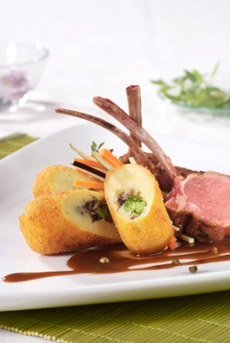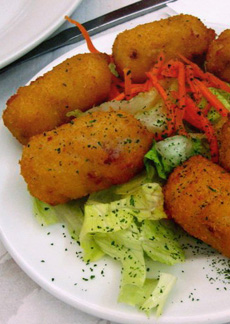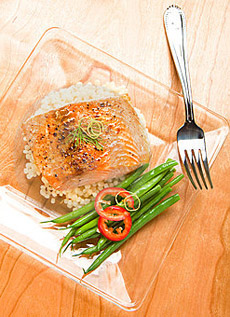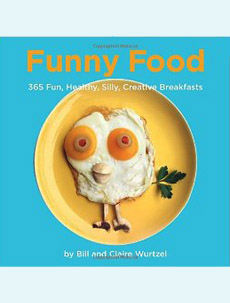|
Go Full-On Comfort Food
Three words: Mac. And. Cheese. The chewiness of pearl couscous really is wonderful with a gooey cheese like Gruyère or mozzarella, and a topping of crispy breadcrumbs (try panko). The symphony of tastes and textures will have your lids dropping in pleasure.
Turn It Into Couscous Risotto
Start by toasting the pearl couscous in a pot over medium-high heat with a touch of olive oil. Then begin stirring liquid in, just as you would with risotto. You can use any liquid that suits you; water or stock with a little white wine are probably your best bets.
Take It Swimming
Once it’s cooked, drop pearl couscous directly into soups, stews and chilis. It provides a pleasant texture and adds body to the food.
To add some extra love, flavor the couscous cooking water with some of the vegetables or aromatics in the main dish. Just drop them into the pot with the couscous as it cooks. Carrots and onions impart a bit of sweetness, herbs add depth and flavor. Even a bone from whatever beast you may be stewing can be a nice touch to build the complexity of your couscous.
THE HISTORY OF COUSCOUS
Couscous is more than 1,000 years old. The Berbers, who lived along the northern (Mediterranean) coast of Africa, west of the Nile Valley (modern Algeria, Morocco and Tunisia—the Barbary Coast/Berber Coast), ate wheat as a staple grain. Over generations, they learned that by grinding the wheat and making couscous, it would keep for years—insurance against drought and famine. The result has long been a base for North African cooking.
Couscous is made from yellow granules of semolina, made from durum pasta wheat, which are precooked and then dried. The pearl grains are the original couscous. They were made by hand-rolling semolina grains on screens, with olive oil, water and salt, letting the small grains fall through, and rolling them again until a consistent size grain was formed. The grains are then coated with olive oil salt and sun-dried, giving them a toasty flavor when cooked. The name is derived from Bhe Berber seksu meaning well rolled, well formed and rounded.
The term can refer to the ingredient itself or a prepared dish. Like pasta or rice, couscous is versatile and has numerous preparations. It is simple to prepare: Just add boiling water and let it sit. It can be flavored with exotic spices or served plain. North African stews (tagines) are traditionally served over it.
Couscous is now widely available in most supermarkets. Keeping with food trends, specialty producers such as Bob’s Red Mill sell whole wheat couscous and tricolor in addition to the natural white pearls.
|






